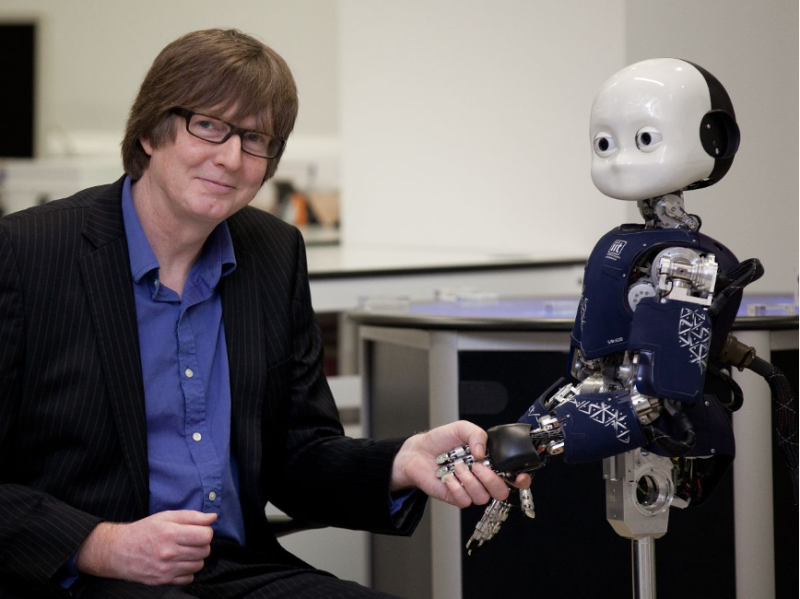IN THE NEWS
CareTech: a sector's saving grace or false hope for an industry on the brink?
The challenges facing the social care sector are well documented. Labour shortages mixed with chronic underfunding mean care providers are under immense pressure to deliver productivity gains. To do more with less. Helpfully, a fertile breeding ground of new tech startups led by some of the country's top talent is helping the industry rise to the challenge.
The innovation is impressive. Log my Care, for example, led by Oxford-educated CEO and Founder, Sam Hussain, is pioneering a new freemium-style, easy-to-use, care management platform -- an industry first. They recently closed their successful £3.25m Series A funding round.
They jostle alongside other more established providers, such as Person Centred Software (see their CEO, Andrew Cole's excellent opinion piece below) and Nourish Care Systems, led by the likes of Numo Almeida.
These platforms hold enormous potential to improve patient outcomes, for example through the integration of records with primary and secondary care systems.
Also, and as Andrew explores in his opinion piece below, Artificial Intelligence (AI)-driven technologies also hold promise in terms of improving the patient experience, assisting the workforce, and helping systems run more efficiently.
Barriers to digitisation
But, despite this innovation, and as Nourish Care marketing executive, Sarah Jenkins, recently told Care Home Professional: "The sector's still catching up on technological advances". Many providers remain stuck in their ways and are yet to upgrade to the most up-to-date offerings. Many still rely on paper based records. The problem is compounded by the fact that more established care management solutions often require significant outlays in terms of staff training (something Log my Care seeks to address).
The UK Government's 2024 digital care deadline is also proving to be a helpful catalyst for change.
But, technological innovation isn't exclusive to care management systems. It's also being seen in other areas too. Oxfordshire-based, TrustonTap, led by power couple William and Antonia, are pioneering an Uber-style platform to facilitate the matching of care givers with care receivers.
Robotics
And, just as software advancement isn't limited to care management systems, nor is technological advancement in CareTech limited to software. Read on to learn more about the future role of robots in a care setting.
Interview
For this month’s edition, we interviewed academic and author Tony Prescott, Professor of Cognitive Robotics at the University of Sheffield and Director of Sheffield Robotics on the future role of robots in a care setting.

What advantages do robots offer relative to humans in a care setting? Has the pandemic and ongoing staffing crisis helped drive attention to the benefits of robotics?
Both the workforce crisis and the pandemic have helped to focus attention on the practical applications of robots in social care. They can minimise the transmission of infections. In terms of staff shortages, a typical care visit is about 15 minutes. In that time a carer may need to prepare food or help somebody go to the bathroom. Robots can be used to optimise the time that human carers have looking after people.
In the short to medium term, they will provide elements of the smart home: beds that turn into chairs; tables that come to you; and kitchens that prepare food automatically. They can help to take on some of the carer’s functions freeing up their time for social and communicative interactions that robots are less good at.
Longer term, are we likely to see Artificial Intelligence (AI)-driven, intelligent humanoids provide emotional and social care that humans currently offer?
It’s a good question. We can already see examples of animal-like robot companions that provide some of the social equivalence of a pet. Human-like AI companions, such as Alexa, are becoming more sophisticated. But the practical challenges of building synthetic humanoids are huge. They’re large and take up a lot of space. Safety is a big issue.
Instead, we should focus on the tasks humans do poorly that robots can do better. We should concentrate on robotic automation in the home to enable people to live independently for longer. The UK Robotics and Automated Systems Network (UK-RAS) published an interesting paper on this in 2017.
Is the Government investing enough into robotics?
No. Of the UK Research and Innovation (UKRI) budget, about one per cent goes into robotics and, of that, less than a quarter into social care robots.
...we should focus on the tasks humans do poorly that robots can do better
This underinvestment is short-sighted. The cost of putting people into care homes is much higher than having them live independently. Hospital stays are higher still. We should try to keep people in their homes for as long as possible and have people move out of hospital as soon as possible and into care homes. Robotics can play a vital role.
The EMERGENCE Network is doing great work ensuring resources are used effectively by fostering collaboration between teams working on common problems.
What are the key challenges we need to overcome before we’ll see the widespread application of robotics in a care setting?
Social intelligence and physical robot-human interactions are significant hurdles. Another is ‘scene awareness’. A robot in your home needs to know where it is. It needs to know what's around it. It needs know that you are there. It needs to know what task it's trying to do.
Current AI capabilities aren’t sophisticated enough to provide this kind of information. However, what we can do in the near term is have robots switch between being autonomous and remotely operated, so that humans can help the robot perform certain tasks.
OPINION
For this month's edition, Andrew Coles, CEO of Person Centred Software outlines his thoughts on the current and future role CareTech can play in alleviating the challenges facing the care sector.

The social care sector is facing challenges on multiple fronts. Acute staff shortages, matched with increasing demands to improve health and social care integration, mean the industry is being pushed to its limits. Care technology, or 'CareTech', is vital to ensuring the industry can meet the challenges ahead.
Digital care management systems are an exciting sub-sector of this industry. Digital care systems are streamlining processes, improving the quality of care, reducing workloads, driving up staff retention, and enabling carers to spend more time with residents improving health outcomes. They also help to reduce the risks of medication errors, dehydration, and missed visits and can record care data in real-time while improving the access and sharing of resident care data.
Person Centred Software was among the first electronic care systems to integrate with NHS Digital's GP Connect service; for the first time, care providers were able to access, in real-time, the GP records and medical notes of care receivers. To date, we've connected over 22,000 residents to their GP records. We've further developed this functionality by enabling care homes to instantly share information with hospitals and external professionals. We're now working with the NHS to roll this out nationwide.
The future of care technology: predictive models
But there's still more to do. The insatiable rate of technological advancement is reflected in the ever-growing applications of CareTech. Artificial Intelligence (AI)-driven technologies are improving the patient experience, assisting the workforce, and helping systems run more efficiently.
AI data processing, for example, offers hope that soon we will have digital systems that can help make informed assessments about a patient's condition and prompt earlier investigation and treatment. They could, for example, predict infections when a patient is otherwise incapacitated with dementia.
Care technology… is vital in ensuring the industry can meet the challenges ahead
The use of digital care software married with 'big data' also offers possibilities. For example, the information generated by the millions of care records captured every day through observational data recorded at the point of care and passive monitoring through technology could enable better care. Monitoring technology is becoming increasingly important in ensuring people are safe and cared for, even when there's no direct human contact.
We've already seen the benefits of having timely access to meaningful data that supports better decision-making and outcomes for those supported in social care settings. Care providers have seen these benefits implemented in the existing generation of digital care records. As a result, we already see a step-change in the industry's readiness to embrace CareTech.
In the future, the norm will be to utilise predictive models that can harness the power of collecting data in volume, allowing early intervention, and reducing the need and reliance on people using health services.
